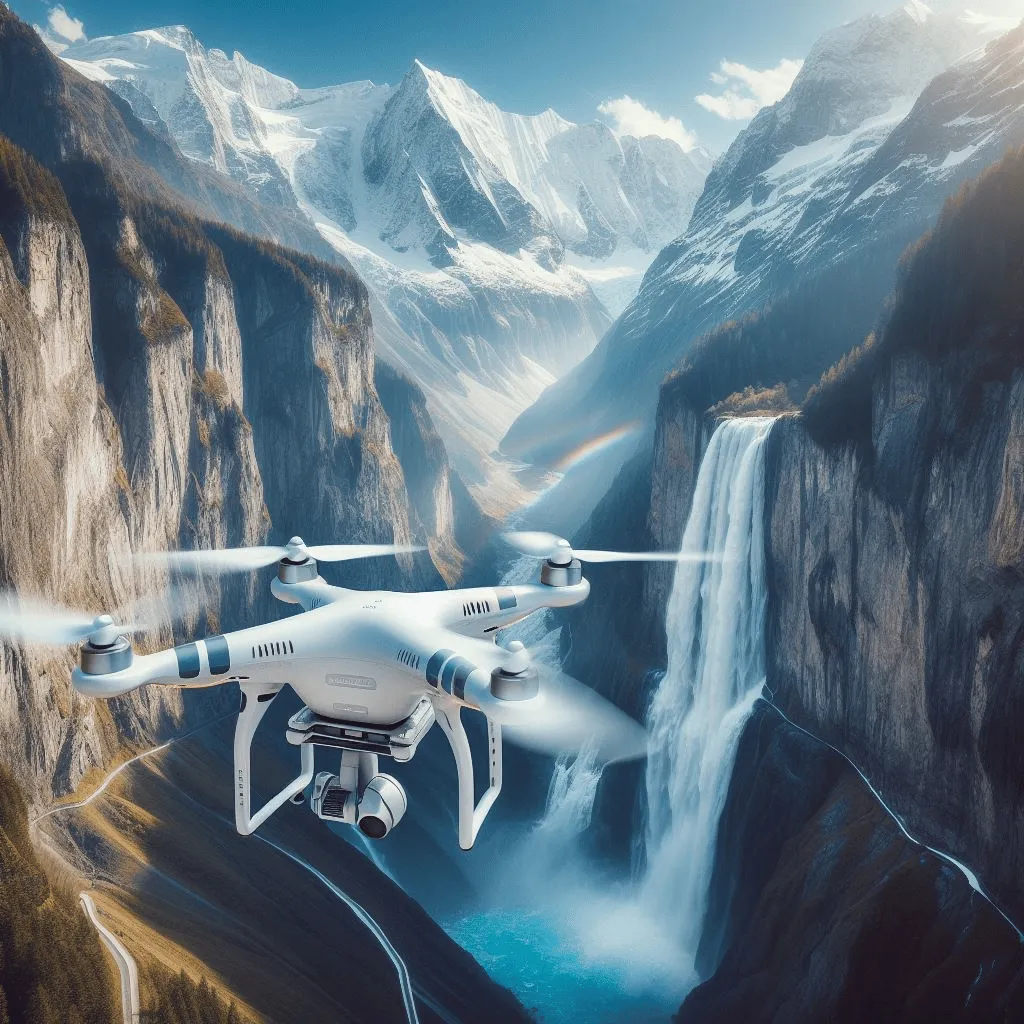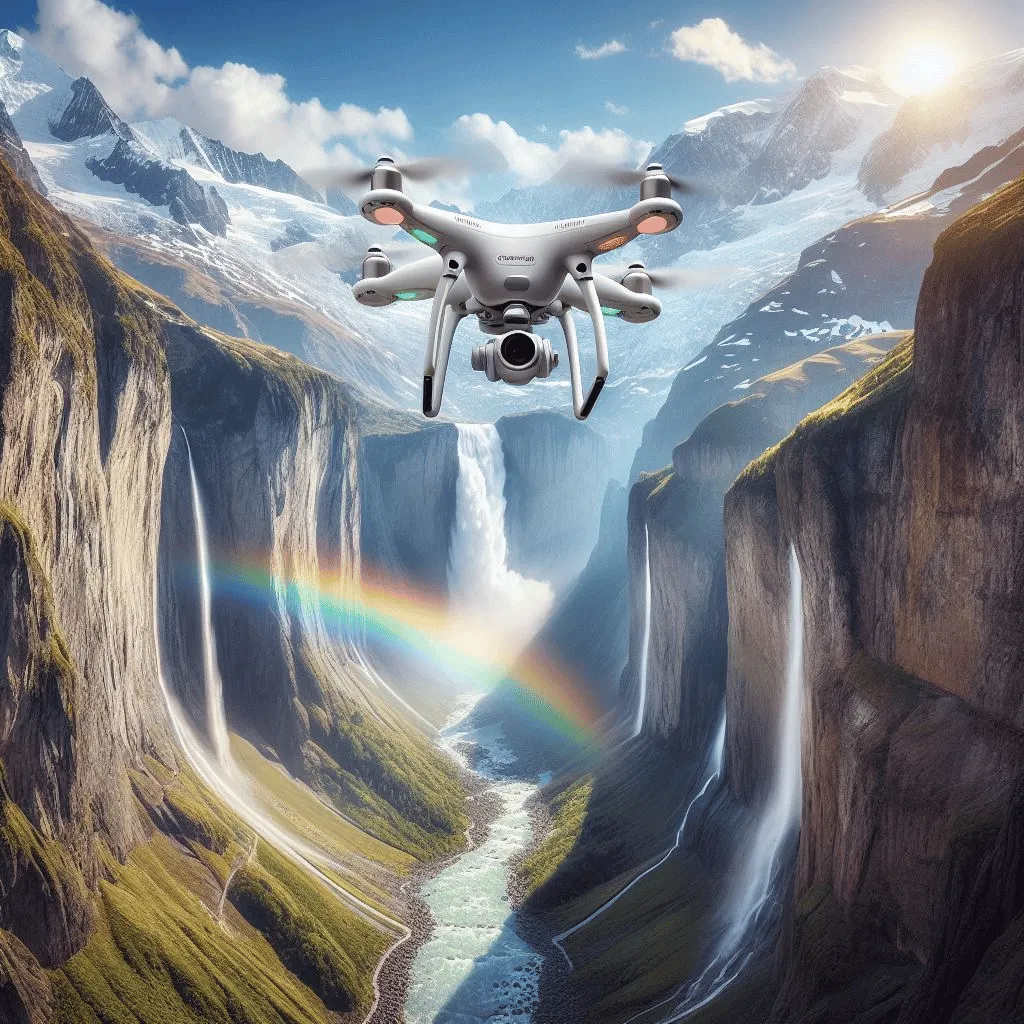What is the Importance of Drone Propellers? (2024)

When it comes to drones, there’s one crucial component that often gets overlooked – the propellers.
These seemingly small and insignificant pieces play a vital role in the overall performance and functionality of these high-flying gadgets.
So, let’s take a closer look at What is the Importance of Drone Propellers? and why they deserve more recognition.
What is the importance of drone propellers?
Drone propellers are absolutely critical to the entire operation of a drone. They’re the unsung heroes of the drone world, playing a vital role in:
1. Generating lift: The spinning propellers push air downwards, creating a pressure difference that lifts the drone against gravity. Without this lift, your drone would be a fancy paperweight.
2. Propulsion: By varying the rotational speed of the propellers, the drone can move forward, backward, and even sideways. This control allows for precise maneuvering and navigation.
3. Stability: Drone propellers are arranged in specific configurations to counteract each other’s torque and maintain the drone’s balance. This stability is crucial for safe and controlled flight.
4. Influencing performance: Different propeller characteristics like size, pitch, and material directly impact the drone’s flight characteristics. Choosing the right propellers can affect your drone’s speed, agility, payload capacity, and even battery life.
Here’s a breakdown of how specific aspects of propellers contribute to drone performance:
In short, drone propellers are the wings of the drone world. They’re not just an accessory, but an integral part of the entire flight system. Understanding their importance and choosing the right ones for your drone is crucial for safe and successful flights.

Read More: When to Replace Drone Propellers? A Comprehensive Guide
What makes a good drone propeller?
There’s no single “best” propeller for every drone, as the ideal choice depends on several factors specific to your drone and flying needs. However, there are some key qualities that generally make a good drone propeller:
1. Efficiency: A good propeller generates maximum thrust while using minimal power. This helps extend your drone’s flight time and conserve battery life. Look for propellers with a good blend of size, pitch, and material for your desired flight style.
2. Durability: Drone propellers take a beating during flight, so they need to be strong enough to withstand bumps, crashes, and everyday wear and tear.
Carbon fiber is a popular choice for its strength and lightness, but nylon and even plastic can be good options for lighter drones or occasional use.
3. Balance: Propellers should be perfectly balanced to avoid vibrations that can impact your drone’s control and stability. Opt for well-made propellers from reputable brands known for quality control.
4. Noise: Some propellers generate more noise than others, which can be a factor depending on your intended use. Consider neighbors and regulations when choosing propellers, especially if you plan to fly in populated areas.

5. Specific characteristics: Beyond general qualities, the ideal propeller will depend on your drone’s size, weight, motor power, and desired flight style:
Read More: Can Drone Propellers Hurt You? (How to Be Safe?)
Remember:
By understanding these factors and your specific needs, you can choose the best drone propellers for safe, enjoyable, and efficient flights.
What type of propeller is used in drones?
Choosing the right propeller for your drone involves considering various factors. First off, it’s important to know that there isn’t just one type of propeller out there.
The ideal propeller depends on factors such as the drone’s size, weight, motor power, and the type of flight you’re aiming for.

Let’s start by looking at the number of blades on a propeller:
Two-blade props are the most common, offering a good balance of efficiency, thrust, and agility—ideal for beginners.
Three-blade props provide more lift and stability, making them suitable for heavier drones or those used for photography or videography.
On the other hand, four-blade props offer maximum stability and lift but are less efficient and require more power, usually used on larger, heavy-duty drones.
Moving on to materials:
Plastic propellers are the most common and affordable option but are less durable. Nylon is a step up in durability and efficiency, while carbon fiber is the strongest and lightest, providing optimal efficiency and performance but comes at a higher cost.
Consider the pitch of the propeller:
Low-pitch props are great for speed and agility but provide less lift. High-pitch props, on the other hand, offer more lift and thrust but are less efficient and require more power.
Remember, the best propeller for your drone depends on your specific needs and preferences. If you’re unsure, it’s a good idea to consult your drone’s manual or speak with a qualified drone expert for personalized recommendations.
Read More: Can You Fly DJI Mini 2 Indoors? (Drone Laws For Mini 2 in 2024)
Why do drones have 4 propellers?
While not all drones have exactly four propellers, the quadcopter design with four propellers is by far the most common and popular for several reasons:
1. Superior Stability and Control: Four propellers offer a symmetrical arrangement that helps the drone maintain balance and stability much better than designs with fewer propellers like tricopters.
This is because any tilt or movement in one direction can be easily countered by adjusting the speed and torque of the other three propellers. This makes quadcopters more maneuverable and easier to control, especially for beginners.
2. Redundancy and Safety: Having four propellers provides a level of redundancy that is crucial for safety. If one motor or propeller fails, the drone can still maintain control and potentially land safely using the remaining three propellers.

This redundancy is especially important for commercial drones carrying payloads or operating in critical situations.
3. Efficiency and Lift: While not always the most efficient for high speeds, four propellers offer a good balance between lift and power consumption.
This allows drones to carry heavier payloads and maintain acceptable flight times compared to some alternative designs.
4. Simplicity and Affordability: The four-propeller design is relatively simple to manufacture and maintain compared to more complex designs with more propellers or unconventional control mechanisms. This makes quadcopters more affordable and accessible for a wider range of users.
While there are other drone designs with different numbers of propellers, each with its own advantages and disadvantages, the four-propeller quadcopter remains the dominant design due to its exceptional combination of stability, control, safety, efficiency, and affordability.
Of course, technology continues to evolve, and future drone designs may offer new and innovative propeller arrangements with even better performance. But for now, the four-propeller quadcopter reigns supreme.
Read More: Can Drones Carry Things? Objects They Can Lift
How many propellers does a drone need?
The number of propellers a drone “needs” depends on several factors, and there’s no one-size-fits-all answer. While the most common type of drone, the quadcopter, utilizes four propellers, other configurations exist with different requirements:
Minimum number for flight:
Common configurations:
Other factors influencing propeller count:
Considerations beyond quantity:
Remember, it’s crucial to choose the right number and type of propellers for your specific drone and its intended use. Consult your drone’s manual or an expert for recommendations based on your needs.

Read More: Can Drones Fly in Winter? (Drone Flying Guide)
Can a drone fly without propellers?
In short, no, a drone cannot fly without propellers. Propellers are fundamental to a drone’s ability to generate lift and thrust, the two forces that enable it to stay airborne and maneuver. Here’s why:
While some experimental drone prototypes might explore alternative propulsion methods like ion thrusters or flapping wings, the vast majority of commercially available and practical drones rely on propellers for flight.
So, for the foreseeable future, propellers will remain an essential component of any functional drone.
Final Thoughts – What is the Importance of Drone Propellers?
As we wrap up our conversation about drones, it’s clear that these remarkable machines have revolutionized various aspects of our lives, from leisure and entertainment to critical industries like delivery and emergency response.
From the humble beginnings of simple quadcopters to the ever-evolving world of multi-rotor designs and cutting-edge technology, drones continue to push the boundaries of innovation and possibility.
Looking ahead, the future of drones is brimming with exciting potential. We can expect further advancements in efficiency, autonomy, and integration with AI, opening doors to even more transformative applications.
However, amidst the technological wonder, it’s crucial to remember the crucial role of responsible drone use. As these powerful tools become more accessible, ethical considerations and regulations become increasingly important.

Ensuring safe and responsible drone operation is paramount to reaping the full benefits of this technology while mitigating potential risks.
Ultimately, understanding the intricacies of drones, from their humble propellers to their complex flight control systems, fosters a deeper appreciation for their ingenuity and potential.
So, whether you’re an avid drone enthusiast, a curious onlooker, or someone grappling with its implications, remember this: the drone phenomenon is just beginning, and its journey promises to be a fascinating one.
What are your final thoughts on the world of drones? What excites you most about their future? Feel free to share your perspective and keep the conversation going!
FAQs
This depends on factors like battery size, weight, and flight style, but average flight times range from 15-30 minutes for consumer drones to up to several hours for high-end models.
Most countries have regulations about flying drones, including altitude limits, no-fly zones, and registration requirements. Familiarize yourself with local laws before flying.
Drones can pose privacy concerns, collision risks, and disruptions to air traffic. Responsible drone use is crucial to avoid these problems.
Drones are used for various purposes like aerial photography, delivery services, agriculture, search and rescue, and scientific research.
We can expect advancements in autonomy, artificial intelligence, and integration with other technologies, potentially leading to even more innovative applications in various fields.
Article Sources:







